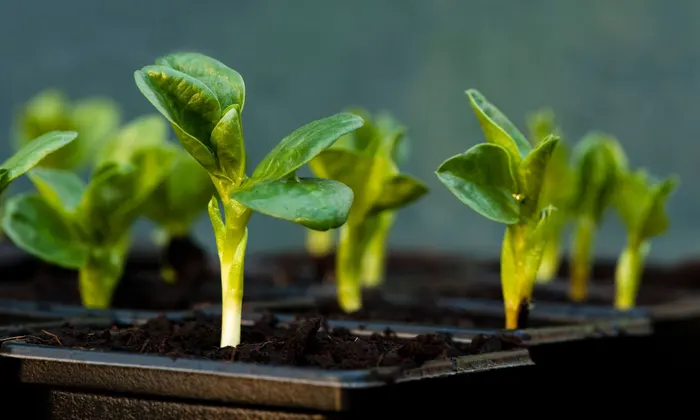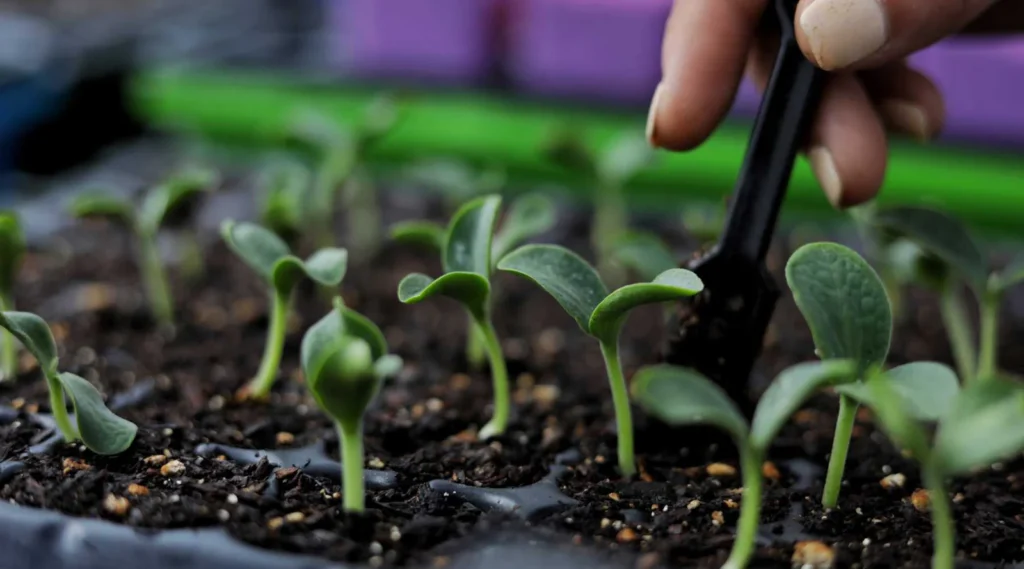Introduction
In the world of plants each plant species is perfectly adapted to a certain pH range of the soil or water. Hobby gardeners are usually familiar with the different pH requirements of various plants like rhododendron, roses, or conifers, and buy special soil mixes and regulate the pH of water appropriately.

Water and pH
The pH is the measure of the acidity or alkalinity of a solution or substrate. A low pH shows that the solution is acidic and a high pH that it is base/alkaline. The middle value of approx. pH 6.8 is the neutral range. The pH is absolutely vital for all living organisms in various ways.
Cannabis requires a pH range around the neutral value of 6.0-6.5 so that it can assimilate nutrients from the growing medium. In any cultivation the pH of the water must therefore be monitored and adjusted appropriately. A full point difference in pH represents a tenfold increase in either acidity or alkalinity. If you water on soil with pH 5.5 it is 10 times more acidic than pH 6.5! A pH below 6.0 can trigger a deficiency of calcium resulting in burnt root tips and black spots on leaves. A pH above 7.0 causes a deficiency in iron which results in chlorotic leaves and yellowing of veins. The assimilation of all major & secondary nutrients required by cannabis for healthy growth and flowering can be seriously affected by an incorrect pH. Most affected are phosphorous, potassium, magnesium, calcium, iron, and manganese. Read our Nutrient Problems Guide for more info on symptoms.
SOIL
Measure the volume of vinegar * required for a fixed amount of water to adjust the pH down to 6.2-6.5. Add the required amount of vinegar each time you need to water and check the pH before watering.
If the water is too acidic (i.e. below pH 6.0) you should mix or replace it with another water source that has a higher pH. This could be bottled mineral water or rain water.
If you are using tap water let it sit in a bucket for a few hours so that the chlorine evaporates.
HYDROPONICS
Add the required nutrients to your water until you have the appropriate EC (nutrient concentration) for your plants.
Measure the pH of the nutrient solution.
If the pH is still too high add vinegar * or pH DOWN until the solution has the correct pH.
If the pH is too low add pH UP until the solution has the correct pH.
When you are using tap water let it sit in a container for a few hours so that the chlorine evaporates.
Regularly check the pH and EC of your water if you are using tap water because there are sometimes larger fluctuations in water quality from municipal companies.
“Incorrect pH belongs to the most serious nutrient disorders in organic-soil gardens. Many complex biological processes occur between organic fertilizers and the soil during nutrient uptake. The pH is critical to the livelihood of these activities.” (Marijuana Horticulture, Jorge Cervantes)
Many plant problems that are attributed by the grower to lack of fertilizer or poor genetics are in actual fact caused by the wrong pH of the growing medium or water (most often of water).
Failure to adjust the pH to the desirable range will result in several negative symptoms, that will range from mild to chronic, depending on the severity and duration of the pH imbalance:
- single nutrient deficiency or multiple nutrient deficiencies causing any of the following: stunted growth, yellowing, dark blotches on leaves, small dark-blue leaves, contorted shoots, shriveled growth, leaf curl or burn, leaf drop, delayed flowering, low yield, etc.
- higher ratio of males during sexing
- appearance of male flowers on females
- vulnerability to mold and fungus
- vulnerability to pests
Fertilizing a plant that is suffering from a pH imbalance usually increases the cycle of problems. It may show a brief respite to symptoms, but only because the fertilizer added to the water may have changed the pH favourably for a short time. Without paying attention to the actual problem and adjusting the pH to the correct range your plants will continue to suffer and you will lose yield on a daily basis.
Due to the constant availability of nutrients in a solvent form in hydroponics there is a greater range of tolerance in pH fluctuation. Cannabis grows well hydroponically within a range of 5.5-6.5. Usually the pH is regulated to 5.8-6.0 for hydroponic systems with a growing medium that has been stabilized.
The ideal pH and pH fluctuation in hydroponics depends on several factors that you have to evaluate on an individual basis because each hydroponic system is different due to the following:
- water quality
- growing medium (coco coir, rockwool, hydro correls, mixture of several mediums, other substrates, or mainly pure water such as aero-flow and bubbler)
- nutrient products used and their buffer capacity
- additional products or buffer agents used
- type of watering system & watering schedule
- EC of nutrient solution
- size of nutrient solution tank or plant container
- room temperature
- size of plants and their nutrient uptake
All of these factors influence how the pH should be adjusted and how it changes in the containers or tank over a period of time. A fluctuation of one full point in hydroponics can usually be tolerated by cannabis as long as the pH is stabilized to the ideal range within 24 hrs. For best results the pH should therefore be monitored daily in a system with large fluctuation.
Ideally your water quality should be good enough so that no or only minimal adjustment to the pH is required for a fresh nutrient solution.
Purchasing the correct fertilizer for your water quality helps in stabilizing the pH in your system. Several companies offer hydroponic fertilizer for either “hard” or “soft” water.
Water quality
Tap water and well water are two main sources that need to be checked for quality. Both can be contaminated with toxic levels of minerals. High levels of sodium (Na) are often found in well water and can cause excessive damage to plants. Saline water on the whole must be avoided.
Tap water can be “hard” from high levels of calcium (Ca) and magnesium (Mg). The pH is in this case very alkaline. Chlorine is another common additive which causes stunted growth in plants and acidifies the soil. If your tap water smells from chlorine you should fill warm water into a bucket and let it sit for a few hours so that the chlorine can evaporate.
For a general assessment of your water quality test the pH and EC range with your essential kit. Also look at the colour of the water and if it has any strong smell. If you notice anything out of the ordinary you can give a 1L sample to the pharmacy for a chemical analysis. The pharmacy sells sterile bottles for this purpose. The analysis usually costs 50-60$/Euro and provides details of common harmful contaminants. This is especially recommended for testing well water. It helps to say that you need an analysis for drinking use and watering plants so that specific contaminants are tested for. If you need to install an osmosis filter for heavily polluted water you will need this analysis to purchase the correct osmosis system and filters.
Your municipal water board can provide a free chemical analysis of the tap water in your neighbourhood if you request it because they regularly perform these tests as a standard procedure. Usually this is not necessary for you to look into unless the water is very poor quality or running through old pipes that pose a health hazard.
Seed germination in response to chemicals: effect of nitrogen and pH in the media
Affiliation
- 1 Ecology Area, University of Extremadura, Avenida de Elvas sIn, 06071 Badajoz, Spain. [email protected]
- PMID: 16850869
Seed germination in response to chemicals: effect of nitrogen and pH in the media
- Search in PubMed
- Search in NLM Catalog
- Add to Search

